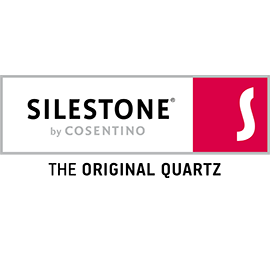Kitchen Countertops
Choosing your kitchen countertop can be a major decision if you want a stone one. For one thing, the investment in time and money is significant for any good-sized kitchen. For another thing, most stone countertops will last for years, so you want to make sure you can live with your choice for the long term.
It doesn’t make the decision any easier when you consider the many types of stones you can choose for your countertops. Each one is a good choice depending on your priorities, so you should find out more about each one before you can move forward. Here are the most popular stones for kitchen countertops, and why you should choose them over the others.
Why choose granite
As you are probably aware, the easy choice is granite. It is very popular kitchens, so you are almost certain it is a good stone for your own. It is the most abundant naturally occurring rock on earth, and yet each slab is unique in its look and design. Formed from millions of years and tons of pressure, granite is durable, which makes it a favorite among builders and sculptors with an eye to posterity. You should know however, that what some people call granite is probably something else, such as gabbro or basalt, but it doesn’t really make that much difference. Granite is typically light colored with visible crystals of quartz, mica, and feldspar, which gives it its distinctive look. Most granite slabs costs from $50 per square footage, but with installation and fabrication, you can expected to pay from $200 per square foot.
Advantages
The main advantage of granite over most other countertop stones is its extreme durability, due mostly to the quartz. Quartz has no color, and gets a 7 on the Mohs hardness scale for minerals. Granite, by definition, is composed of a minimum of 40% quartz.
Another great thing about granite is its beauty, which is due to a combination of light-colored feldspar and other minerals. The other minerals such as mica impart the distinctive veining and crystalline look of granite, and makes each slab unique.
Granite countertops is popular for kitchens because it makes it look fantastic. Additionally, it is resistant to heat and scratches, so you have a winning combination.
Disadvantages
The main thing against granite is its porosity. Porous material can potentially harbor bacterial growth, which you can imagine is a problem for any kitchen. Its porosity also means it is prone to staining. We seal our granite countertops after installation to take care of this small problem, and in most cases you will not have to reseal for several years.
The fact that granite is heat-resistant doesn’t mean the seal is, so you have to be careful with placing anything very hot directly on the countertop. Best practice is to use a trivet or hot pad, and to wipe up any spills immediately.
Why choose marble
There is no denying that marble is beautiful in itself. No matter for what purpose it is used, marble imparts a compelling elegance, which is why sculptors love to use it for their works of art.
Marble has a distinct, mellow patina that only gets better with age. As a kitchen countertop, it is guaranteed to make its surroundings that much more beautiful.
Marble is a metamorphic rock, which means it was once limestone, but time and pressure broke down its composition and resolved into what is now marble. The most common color of marble is white, although colored marble is also available. However, colored marble tends to be more expensive, and lacks the special look of marble. The average cost of white marble is $85 per square foot, so expect to shell out about $230 or more per square foot for installation and fabrication.
Advantages
Classically beautiful, marble is a great stone to make any room elegant. In terms of kitchen use, marble is the favored material for pastry working tables because it keeps cool in any weather. Unless you get an exotic colored stone, marble is a typical choice for an all-white design for a kitchen, because its mellow glow keeps the room from looking too sterile. It is very difficult to find a stone that can match marble for elegance and luxury.
Disadvantages
The problem with marble is its relatively softness, one of the reasons why sculptors like it, The downside is it scratches easily, which is not a good thing if you use it as a work surface.
Another disadvantage is its porosity, which aside from the bacteria thing, also means it stains more than most stones. It is still a good option for your countertops if you have it properly sealed. It also helps if you choose a honed finish, which does not show scratches too badly.
You also need to be ready with special cleaning products, because marble etches with most abrasives and acids, so you have to make sure you have marble-safe cleaners at hand.
Why choose quartz
Quartz countertops generally refer to engineered quartz countertops, which means they do not occur in nature, However, even if they are not natural, they still make pretty amazing countertops. In general, these countertops are made of at least 90% quartz, usually recycled from other applications, and bound by resin and pigments.Among the most popular brand names of quartz countertops are Silestone, Cambria, Zodiaq, and Caesarstone, and the typical cost is around $100 per square foot, not including installation costs.
Advantages
Because it is most made up of quartz, quartz countertops are extremely tough. It is also an interior designer’s dream stone, because quartz is a colorless mineral, so it is virtually impossible not to find the right color for a particular project, and to match all the countertops, cladding, and fireplace surrounds perfectly. You will not have to make do with what is already available as you would need to with natural stone.
Aside from being durable and versatile, quartz countertops are non-porous, heat-resistant, and scratch-proof. It is maintenance-free, save for the regular wipe down with a damp cloth to keep it clean. Since it is non-porous, there is no need to seal it.
Disadvantages
The worst thing you can say about quartz countertops is its lack of uniqueness. Choose one model of quartz countertops and each slab will be exactly the same. Dark stones also have a tendency to fade under constant exposure to direct sunlight, so they are not ideal for outdoor use. If you need a quartz countertop outside or in an area near a large window, pick a light colored one where fading is not an issue.
Why choose limestone
Limestone is also rivalling other stones in popularity nowadays. Limestone is a sedimentary rock, which means it formed from calcium carbonate deposits over millions of years. It is usually found under water where shells, algae, and other debris are present. There are many uses for limestone, including as a dimension stone for use in countertops. Limestone is typically white or sand colored, often with a greenish tinge. The cost of limestone slabs is from $67 per square foot, not including installation or accessories such as sinks.
Advantages
The best thing about limestone is that it is highly adaptable. It looks a lot like marble, so it is a good choice to give elegance to bathrooms or kitchens. It is also very dense and durable, with high resistance to heat, which makes it a functional part of the kitchen. Some people favor limestone because it is an organic stone; it is made of the fossils and shells of aquatic life, which makes it a sustainable material of sorts. Limestone is also relatively more abundant, easy to mine, and therefore more affordable than most other dimension stones.
Disadvantages
The main problem with limestone is that it is not as durable as granite, and like marble, it scratches and discolors easily. We recommend choosing limestone that has as little of the greenish cast as possible, as the more green it is, the softer the stone. A good way to protect limestone countertops is to apply a seal to it periodically.
Why choose travertine
Another popular stone with homeowners nowadays is travertine. It has a a smooth, rich and creamy look to it that makes it very visually appealing. It is actually one type of limestone, but formed under high pressure and heat, and also closely resembles marble, but dark. Some people refer to it as onyx marble, and it is available in black, but the most common tones are earthy, such as brown, red, and yellow. It is a favorite material for countertops as well as wall cladding, floor tiles, and paving stones. Travertine slabs go for as little as $5 per square foot, not including installation.
Advantages
Travertine reflects light well, which adds to its elegance and function. It is very durable and will last for many years. They are also pliable, so they are easy to cut to fill in gaps and odd shapes with little problem. They are available in a variety of sizes, from tiles to slabs, and they are easy to mine, which makes them much more affordable than other dimension stones. If you want elegance, but have a tight budget, travertine is a good choice for you.
Disadvantages
However, travertine is extremely porous and highly reactive to even the mildest acids. Travertine countertops need to be sealed regularly to avoid damaging them in areas that experience heavy use. You can get travertine countertops in various finishes, and we recommend a matte or brushed finish to keep the evidence of scratches to a minimum. Finally, travertine does not stand up well in direct sunlight or other sources of heat, so you need to keep your hot pots off it.
Conclusion
All these dimensions stones will look fantastic on your kitchen countertops. However, you need to consider their advantages and disadvantages in order to choose the right one for your needs and lifestyle. These tips should help get you there.







